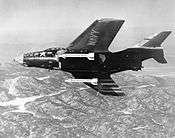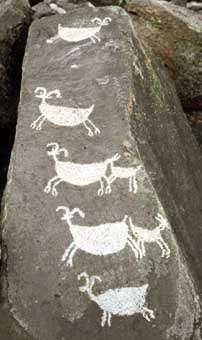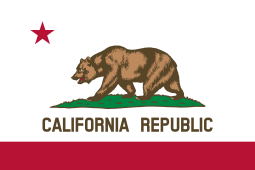Naval Air Weapons Station China Lake
| Naval Air Weapons Station China Lake | |||||||||||||||||||
|---|---|---|---|---|---|---|---|---|---|---|---|---|---|---|---|---|---|---|---|
 | |||||||||||||||||||
|
IATA: none – ICAO: KNID – FAA LID: NID – WMO: 74612 | |||||||||||||||||||
| Summary | |||||||||||||||||||
| Airport type | Military | ||||||||||||||||||
| Owner |
| ||||||||||||||||||
| Operator |
| ||||||||||||||||||
| Location | China Lake, California, U.S. | ||||||||||||||||||
| In use | 1943–present | ||||||||||||||||||
| Commander | CAPT Richard A. Wiley | ||||||||||||||||||
| Elevation AMSL | 2,284 ft / 696 m | ||||||||||||||||||
| Coordinates | 35°41′08″N 117°41′31″W / 35.68556°N 117.69194°WCoordinates: 35°41′08″N 117°41′31″W / 35.68556°N 117.69194°W[1] | ||||||||||||||||||
| Website | www.cnic.navy.mil/ChinaLake | ||||||||||||||||||
| Runways | |||||||||||||||||||
| |||||||||||||||||||
Naval Air Weapons Station (NAWS) China Lake is part of Navy Region Southwest[3] under Commander, Navy Installations Command and is located in the Western Mojave Desert region of California, approximately 150 miles (240 km) north of Los Angeles. Occupying three counties – Kern, San Bernardino and Inyo – the installation’s closest neighbors are the cities of Ridgecrest, Inyokern, Trona and Darwin. The main gate of the installation is located at the intersection of Inyokern Road (Highway 178) and China Lake Blvd. in the city of Ridgecrest.
China Lake is the United States Navy's largest single landholding, representing 85 percent of the Navy’s land for weapons and armaments research, development, acquisition, testing and evaluation (RDAT&E) use and 38 percent of the Navy’s land holdings worldwide. In total, its two ranges and main site cover more than 1,100,000 acres (4,500 km2), an area larger than the state of Rhode Island. As of 2010, at least 95 percent of that land has been left undeveloped. The roughly $3 billion infrastructure of the installation consists of 2,132 buildings and facilities, 329 miles (529 km) of paved roads, and 1,801 miles (2,898 km) of unpaved roads.
The 19,600 square miles (51,000 km2) of restricted and controlled airspace at China Lake makes up 12 percent of California’s total airspace. Jointly-controlled by NAWS China Lake, Edwards Air Force Base and Fort Irwin, this airspace is known as the R-2508 Special Use Airspace Complex.
Mission
NAWS China Lake's mission is to support the Navy's research, testing and evaluation.
Armitage Field
All aircraft operations at NAWS China Lake are conducted at Armitage Field, which has three runways with more than 26,000 feet (7,900 m) of taxiway. More than 20,000 manned and un-manned military sorties are conducted out of Armitage by U.S. Armed Forces each year.
Foreign military personnel also use the airfield and range to conduct more than 1,000 test and evaluation operations each year.
Nearly 900 military and civilians passed through Armitage Field in 2007.
Tenant commands
The 620 active duty military, 4,166 civilian employees and 1,734 contractors that make up China Lake's workforce are employed across multiple tenant commands, including:[4]
- Naval Air Warfare Center Weapons Division
- Air Test and Evaluation Squadron 9 (VX-9)
- Air Test and Evaluation Squadron 31 (VX-31)
- Marine Aviation Detachment
- Explosive Ordnance Disposal Mobile Unit 3 Detachment
- Explosive Ordnance Disposal Testing and Evaluation Unit 1
- Naval Facilities Engineering Command Southwest Detachment
- Naval Construction Training Center Port Hueneme (Seabees)
History
In the midst of World War II, adequate facilities were needed by the California Institute of Technology for test and evaluation of rockets. At the same time, the Navy needed a new proving ground for aviation ordnance. Caltech's Dr. Charles C. Lauritsen and then Commander Sherman E. Burroughs met and formed a pact to find a site that would meet both their needs.
Naval Ordnance Test Station (NOTS)
The Navy established China Lake as the Naval Ordnance Test Station (NOTS) in November 1943. Its mission was defined in a letter by the Secretary of the Navy, ".... a station having for its primary function the research, development and testing of weapons, and having additional function of furnishing primary training in the use of such weapons." Testing began within a month of the Station's formal establishment. The vast and sparsely populated desert with near perfect flying weather and practically unlimited visibility, proved an ideal location not only for test and evaluation activities, but also for a complete research and development establishment.
The early Navy-Caltech partnership established a pattern of cooperation and interaction between civilian scientists and engineers, experienced military personnel and defense contractors that has made China Lake one of the preeminent research, development, test and evaluation institutions in the world. Dr. L.T.E. Thompson was the first civilian head at the unit.
In 1950, NOTS scientists and engineers developed the air-intercept missile (AIM) 9 Sidewinder, which became the world’s most used and most copied air-to-air missile. Other rockets and missiles developed or tested at China Lake include the Mighty Mouse, Zuni, Sidewinder, Shrike, Joint Stand-Off Weapon (JSOW) and Joint Direct Attack Munition (JDAM). In June 1963, President John F. Kennedy visited NAWS China Lake for an air show and to see Michelson Lab.
Naval Weapons Center

In July 1967, NOTS China Lake and the Naval Ordnance Laboratory in Corona, California, became the Naval Weapons Center. The Corona facilities were closed and their functions transferred to the desert in 1971. In July 1979, the mission and functions of the National Parachute Test Range at Naval Air Facility El Centro were transferred to China Lake.
Naval Air Weapons Station
In January 1992, the Naval Weapons Center and the Pacific Missile Test Center Point Mugu were disestablished and joined with naval units at Kirtland AFB in Albuquerque and at the White Sands Missile Range at White Sands, NM as a single command - the Naval Air Warfare Center Weapons Division of the Naval Air Systems Command (NAVAIR). At the same time, the physical plant at China Lake was designated as a Naval Air Weapons Station and became host of the NAVAIR Weapons Division, performing the base-keeping functions.
The base's role in the community evolved from that of primary landlord and provider of services to that of a good neighbor. The NAWS housing area, much smaller than that of the 1960s, is sufficient to support the base's military. In 1982 the community area of China Lake, including most of base housing, was annexed by the City of Ridgecrest. In 2013, Congress reserved China Lake's acreage for military use for an additional 25 years.
China Lake community
China Lake allowed both civilians and military to live side-by-side in government housing. Community services, such as banking at the Bank of America, grocery shopping at the Navy commissary, barber shops, fire and police protection, and road maintenance, were all provided by the federal government. China Lake residents could attend a church at All Faith Chapel, built by the federal government.
China Lake Way
The China Lake Way, more formally known as Principles of Operation, were established in 1946 through the leadership of Vannevar Bush. The core principle of the China Lake Way was the partnership between civilian and military workers, to "... make clear that civilian scientists worked in partnership with the military, not in subordination to it. The principles also made clear that top leadership was shared between a commander and a technical director, rather than having one report to the other." Through this unique partnership a technical director and Navy organizational commander shared joint leadership of China Lake. These core principles provided the leadership during the early days of China Lake. The China Lake way of operations allowed flexibility thereby creating an environment where innovative weapons were developed quickly. "This highly effective leadership team is widely credited with providing the bureaucratic buffer which allowed the scientists and engineers at China Lake the flexibility needed to develop and deliver innovative products at unprecedented rates."
Within this tight-knit community the "China Lake Way" was reinforced as federal employees had easy access to both their home and workplace. A particularly fine example of the China Lake Way was how Lav McLean, wife of Bill McLean, threw a spur of the moment party to celebrate the first successful test of the Sidewinder missile. Her husband was the principal inventor of the Sidewinder missile. The party was attended by a couple of hundred China Lake residents.[5][6]
Due to the arid climate and community isolation, attracting highly educated scientists to the base was a challenge, so the Navy was generous with swimming pools, athletic facilities, and assistance with hobbies such as ceramic clubs, scouting, low-cost hobby shops, and other recreation facilities. Also, the public schools excelled in all disciplines because of the higher parental education levels. Crime on the base was almost nonexistent due to a rigidly enforced 10:00 PM curfew in residential neighborhoods. Because of the Federal Property status, base occupants knew their United States constitutional rights were suspended which gave base police greater enforcement power. During the Vietnam War the base held a goal of defeating communism, and this fostered a common support of the war, in contrast to the diverse civilian views on it across the United States.
Through the years the Principles of Operation model has eroded. Minor changes were made in 1955, followed by major changes in 1974, when the military was placed in charge of the civilian workforce. In 1976, the China Lake Principles of Operation were eliminated. By 1980, the principles were rewritten, but not reissued. In 1985 the China Lake Way was adopted as "operating principles."[7]
The Rocketeer II is the base newspaper formerly published by AeroTech News and Review, and published by the Daily Independent since 2013.[8] The original Rocketeer base newspaper ceased publication, leading to this newest publication.[9]
Present day
In 2014 U.S. Rep. Kevin McCarthy of California introduced a bill to permanently designate Naval Air Weapons Station China Lake property for military use, arguing it would save taxpayer money and enhance the base's mission.[10] The bill would add 25,000 acres, including about 7,500 acres that were part of a bombing range in San Bernardino County, as well as 19,000 acres along the station's southwest boundary. The Bureau of Land Management said that DoD needs could change in future decades and that it is a popular recreation area with trail riding, camp sites and hunting, and an important wildlife corridor, especially for the threatened desert tortoise.[10]
Weapons developed at China Lake

Other notable projects
Environmental stewardship
While the Navy’s mission is primarily national defense, they and NAWS China Lake are committed to operating forces and conducting training in a manner compatible with the environment. National defense and environmental protection are not mutually exclusive goals. Part of the Navy's mission is to also prevent pollution, protect the environment and protect natural, historical and cultural resources.
Wildlife
The majority of the land at NAWS China Lake is undeveloped and provides habitat for more than 340 species of wildlife, including feral horses, feral burros (donkeys), Big Horn Sheep and endangered animals, such as the desert tortoise and Mojave Tui Chub. The Mojave Tui Chub was introduced to China Lake's Lark Seep in 1971. Lark Seep is fed by the water outflow from a waste water treatment plant located at China Lake. The Tui Chub population has since grown and expanded to a population of around 6,000 in 2003.[11] The desert on which the installation is built is home to 650 plant types.
Petroglyphs

The area was once home to the Native American Coso People, whose presence here is marked by thousands of archaeological sites; the Coso traded with other tribes as far away as San Luis Obispo County, California. This locale was also a site used by European miners and settlers whose cabins and mining structures are extant throughout the Station.
The Coso Range Canyons are home to the Coso Rock Art District, an area of some 99 square miles (260 km2) which contains more than 50,000 documented petroglyphs,[12] the highest concentration of rock art in the Northern Hemisphere.
No one knows for sure how old these petroglyphs are. A broad range of dates can be inferred from archaeological sites in the area and some artifact forms depicted on the rocks. Some of them may be as old as 16,000 years, some as recent as the 1800s. Designs range from animals to abstract to anthropomorphic figures. Opinions vary widely whether the petroglyphs were made for ceremonial purposes, whether they are telling stories to pass along the mythology of their makers, or whether they are records of hunting hopes or successes, clan symbols or maps.
Declared a National Historic Landmark in 1964, the rock art in Little Petroglyph Canyon provides insights into the cultural heritage and knowledge of the desert’s past. Everything in the canyon area is fully protected, including the obsidian chips and any artifacts or tools, as well as the petroglyphs and native vegetation and wildlife.
Little Petroglyph Canyon contains 20,000 documented images, which surpasses in number most other collections.
NAWS China Lake personnel believe that the petroglyphs located within the installation are a "treasure", and should be shared with the general public. Little Petroglyph Canyon is open to the public for tours.[13]
Monorail
Remains of the Epsom Salts Monorail are signposted and visible within the site. The central rail, on which mining tractors pulled minerals from a mine to the nearest railway siding, was supported on wooden A frames of a low trestle.
Coso Geothermal Field
The Station is also home to the Coso Geothermal Field. The geothermal power plants located there began generating electricity in 1987 and are the Navy’s first foray into producing clean power from the earth’s thermal energy (heat). Total electricity production from the field amounts to 270 MW, equivalent to saving over 4 million barrels of oil. Just one megawatt of electricity will meet the needs of approximately 1,400 households.
Origin of name
Chinese men harvested borax from the dry lake bed approximately 1.5 miles south of Paxton Ranch. The operation was known locally as “The Little Chinese Borax Works’’.[14]
See also
References
- ↑ U.S. Geological Survey Geographic Names Information System: China Lake Naval Weapons Center
- ↑ FAA Airport Master Record for NID (Form 5010 PDF), effective 2007-07-05
- ↑ Commander, Navy Region Southwest
- ↑ "Naval Air Weapons Station China Lake: Tenant Commands". United States Navy. 2015. Retrieved April 8, 2015.
- ↑ DiPol, John (2005). "The China Lake Community as It Was" (PDF). The China Laker. China Lake Museum Foundation. Retrieved 2012-01-25.
- ↑ Babcock, Elizabeth (September 1999). Sidewinder Invention and Early Years. The China Lake Museum Foundation.
- ↑ McGahern, Robert (2004). "An Examination of the Navy's Future Naval Capability Technology Transition Process". Naval Postgraduate School Monterey, California.
... make clear that civilian scientists worked in partnership with the military, not in subordination to it. The principles also made clear that top leadership was shared between a commander and a technical director, rather than having one report to the other.
- ↑ "DI awarded contract to print Rocketeer II". The Daily Independent. Ridgecrest, California. March 9, 2013. Retrieved April 8, 2015.
- ↑ "China Lake Rocketeers Archive". Retrieved 2012-01-23.
- 1 2 KEVIN FREKING (April 29, 2014). "Obama administration opposes China Lake expansion". The Tribune. Retrieved 5 May 2014.
- ↑ "Currents" (PDF). China Lake and the Tui Chub. 2003. Archived from the original (PDF) on October 16, 2004. Retrieved 2012-01-22.
- ↑ NPS Archeology Program: Coso Rock Art www.cr.nps.gov
- ↑ https://www.cnic.navy.mil/ChinaLake/OperationsAndManagement/EnvironmentalSupport/Petroglyphs/PetroglyphTours/index.htm
- ↑ Panlaqui, Carol, What’s in a Name?, Maturango Museum, Ridgecrest, California (undated single sheet).
External links
| Wikimedia Commons has media related to Naval Air Weapons Station China Lake. |
- Official sites
- Official Naval Air Weapons Station website
- NAVAIR Home
- NAVAIR Weapons Division
- Air Test and Evaluation Squadron Nine
- Air Test and Evaluation Squadron Thirty One
- Museum
- Naval History & Heritage Command (History.navy.mil): U.S. Naval Museum of Armament and Technology at China Lake — official website.
- Chinalakemuseum.org: U.S. Naval China Lake Museum of Armament and Technology
- Chinalakemuseum.org: U.S. Naval China Lake Museum of Armament and Technology Foundation website
- Other
 Media related to NOTS−Naval Ordnance Test Station China Lake (HABS images) at Wikimedia Commons
Media related to NOTS−Naval Ordnance Test Station China Lake (HABS images) at Wikimedia Commons- 2002 NAWS China Lake Welcome brochure
- GlobalSecurity.org: China Lake
- Astronautix.com: China Lake
- The California State Military Museum
- China Lake Alumni.org
- AirTime, Spring 2007, Volume 3, Issue 1
- FAA Airport Diagram for NAWS China Lake (PDF), effective December 8, 2016
- Resources for this U.S. military airport:
- FAA airport information for NID
- AirNav airport information for KNID
- NOAA/NWS latest weather observations
- SkyVector aeronautical chart for KNID
- China Lake logos including the "rocket-ridin' rabbit"
